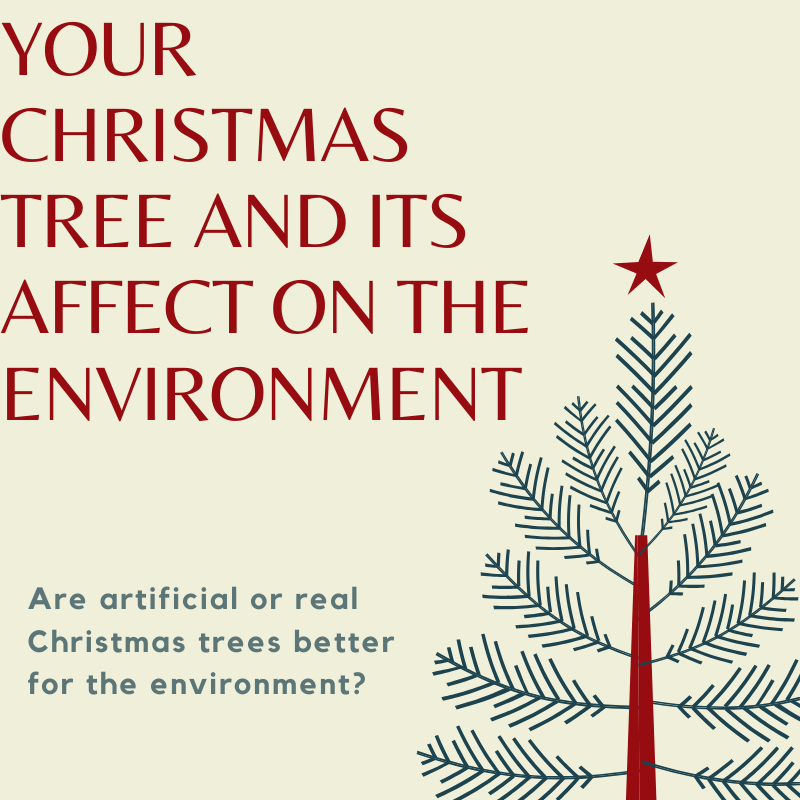The Impact of Your Christmas Tree on the Environment
Your Christmas tree significantly affects the environment when they are being bought on a global level, so be sure to make the appropriate choice this holiday season.
Dec 23, 2019
With Christmas coming up and the winter holidays being a time for excessive spending, do people ever stop to think about how their purchases affect the environment? Every wrapping paper roll and every present bought will eventually end up in a landfill, with their destiny of polluting the earth being fulfilled by a season of mass consumerism. Because this process is rooted in almost every celebration during the winter holidays, there is no simple way out of this gift-giving phenomenon; let us begin with the seemingly insignificant, yet crucial aspect of one annual celebration in particular: your Christmas tree.
As the choice between real and artificial trees is a particularly relevant topic of conversation among participating households, information on costs, accessibility and labor are collected as deciding factors on which to purchase. However, what should also be taken into account is each option’s carbon footprint. Each one has its pros and cons, but the environmental effects depend on how you dispose of your tree. Upon overlooking all the factors that go into what makes each tree better than the other, it becomes evident that real Christmas trees are the more environmentally beneficial option.
“I agree that real Christmas trees are better for the environment, but since I already have a fake tree I will keep re-using it,” freshman Valerian Galeano said.
Despite the common misconceptions that purchasing a real tree is worse due to deforestation-related arguments, the tree can be chopped down further to create mulch, helping more trees grow and, in a way, reuse the tree. On the other hand, an artificial tree – unless melted down and sent to a factory which releases greenhouse gases – cannot replicate this effect in any way=.
How you dispose of your real Christmas tree is crucial; if done wrong, it can lead to even more carbon emissions than an artificial tree. Chopping down your tree so that it can be converted into mulch not only assists other plants in flourishing, but releases oxygen in the process. Another method of disposing that releases oxygen as well is replanting a potted tree and using it again for the next year. This is a very beneficial option for the environment seeing as you are contributing to putting oxygen in the atmosphere and putting into use again as a Christmas tree.
It is common for people to think that real trees are cut down straight from forests. This claim is nothing but a myth seeing as these trees are grown on farms for the purpose of cutting down. Sometimes farmers even plant more trees than they cut down. Keeping the fact that they are grown on farms in mind, make sure the tree purchased is grown locally to reduce any emissions that could possibly be released.
Just like the aforementioned claim, people often believe that the longer you reuse the artificial tree, the less harm it will do to the environment. When making this claim, do these individuals realize the fact that these trees are made of plastic? As far as it is known, plastic does not release less carbon emissions in landfills if you kept it over five years, and therefore, the amount of years the artificial tree is kept has little to nothing to do with how much carbon dioxide it releases when it ends up in a landfill.
Making sure you go as green as possible during this holiday season is important, seeing as most can begin to get lost in the madness of getting the right gift and the urge of pursuing sales. The type of Christmas tree purchased is a perfect example of going green during Christmas without sacrificing anything. Next year, push for a real, authentic Christmas tree that is locally grown and help the environment when you dispose of it, one tree at a time.












